Meaningful Travel: When Your Trip Isn’t Just a Vacation
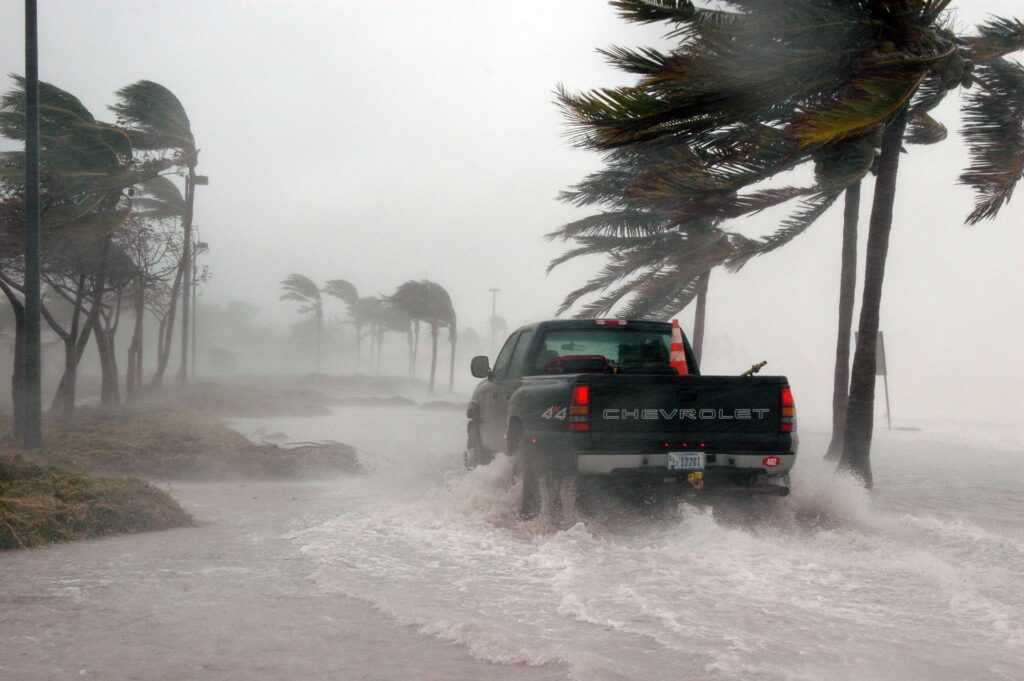
Miles of pine forests were flattened, broken like toothpicks. Debris littered yards, roadsides, and even the highway. Business and road signs were bent or missing. All the restaurants were closed. Hotels had no vacancy, and we’d packed a tent. It wasn’t your typical Florida vacation. Rather our motto was voluntourism.
When Hurricane Michael made landfall on October 10, 2018, it became the first Category 5 hurricane to strike the contiguous United States in nearly three decades. With windspeeds up to 160 mph, the storm caused approximately 74 deaths, $25 billion in damages, and disrupted millions of lives.
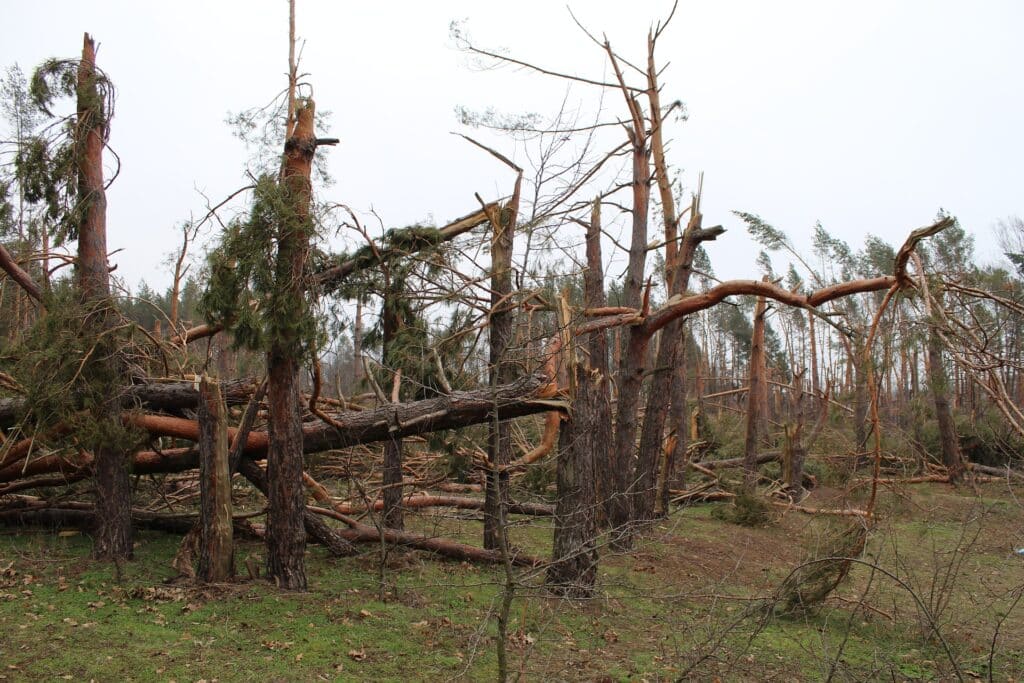
Three weeks later, my husband and I set up our tent in a parking lot near Panama City. Our car was laden with tools and non-perishable foods. The purpose? We wanted to take time from our own lives to help others put theirs back together.
Life in the Disaster Zone
As we drove into the affected area to do voluntourism, the night began to fall, masking, to an extent, havoc the storm left in its wake. We hastily set up our tent – I eyed the nearby drainage ditch warily, wondering if alligators lived this far north.
Our two-person tent was nestled alongside a dozen others, all belonging to volunteers. It was a veritable tent city. Someone had set up camp showers. From within a chilly plywood stall, I looked up at the stars. Power outages precluded the city’s usual glow, and the night sky was breathtaking.
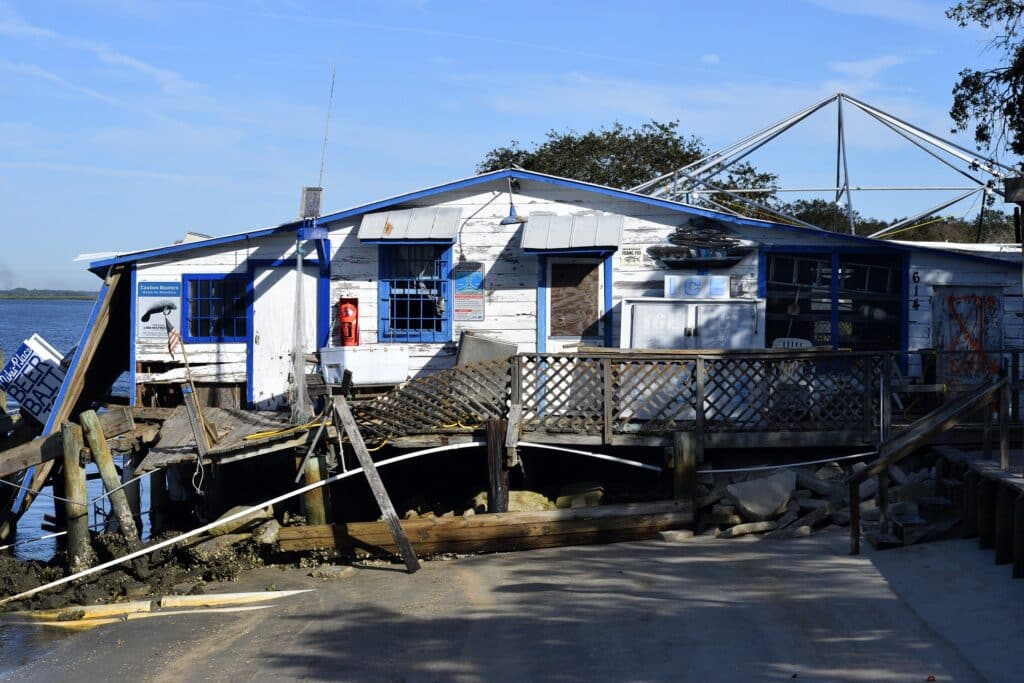
We had been advised to bring our own non-perishable foods since supply chains – not to mention electricity – were not yet reliable. We ate from cans, made peanut butter sandwiches, or relied on self-heating, military-style MREs. Some of our companions were more experienced early responders – they brought charcoal grills and generators. It was a treat when our “neighbor” offered us fresh fish from the grill!
At night, it was unusually cold for northern Florida, even dipping below freezing. In the morning, a pair of soggy bantam roosters – they too displaced from their home – heralded the dawn with their calls.
Daylight revealed the scope of the disaster. Nearly every tree was uprooted or broken, some blocking roads or crushing homes. Most roofs were tarped or missing entirely. Everywhere we looked, debris and discarded belongings were piled at the street. Handmade signs warned looters to beware.
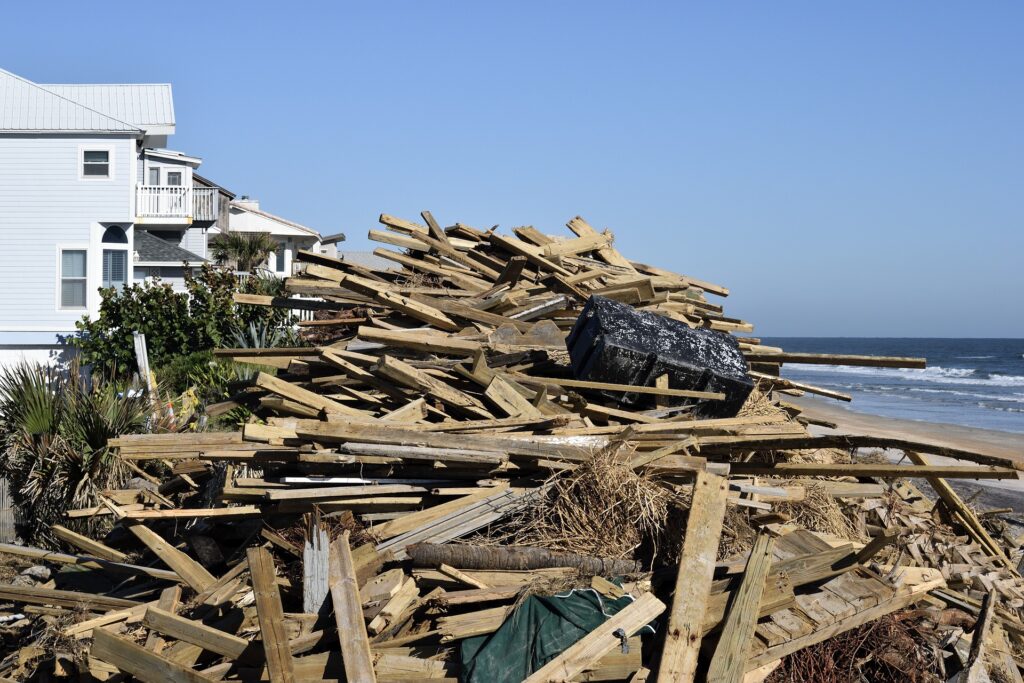
The places where you would expect to see people were eerily vacant. Routines were interrupted and businesses closed. The city enforced a 7 pm curfew. Many evacuees had not yet returned.
We spent each day helping families sort through their belongings, salvaging what we could, treating or preventing the growth of mold and mildew. Sometimes, we wore protective Tyvek suits and respirators. This was the first step – it was what we’d been trained for. Skilled construction volunteers would follow and rebuild.
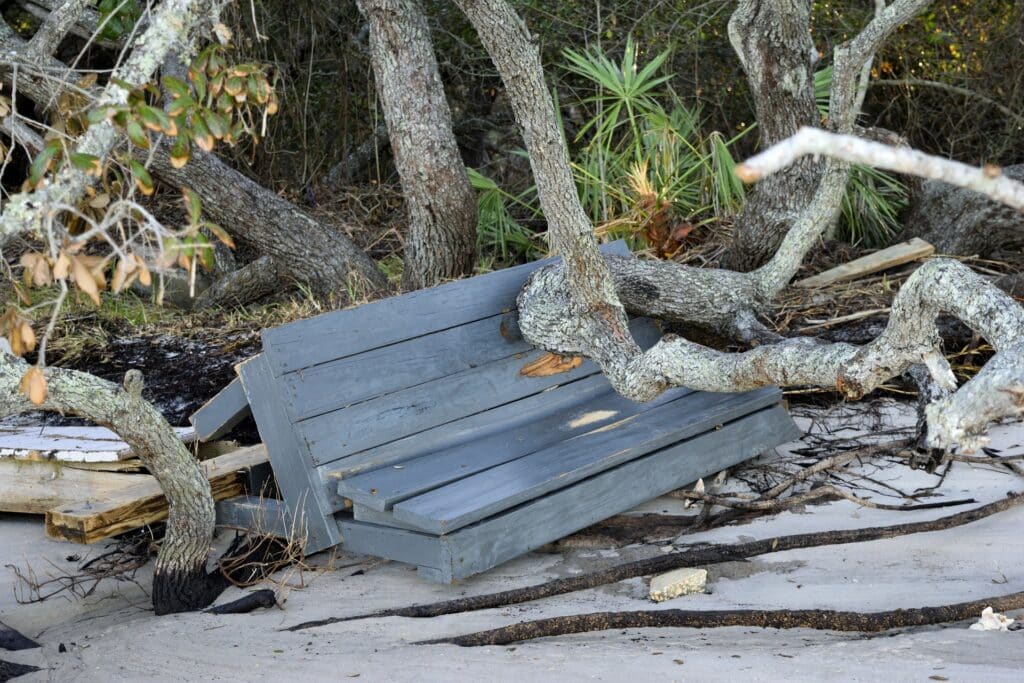
Finding My Niche
What made this trip meaningful was not merely braving the elements or learning new skills. It was the human connections. Emotions ran high – tears were shed over what was lost – but the families we met weren’t beset with hopelessness. Instead, they expressed such gratitude that it still warms my heart to this day. I’ll never forget having Korean tea with an elderly lady or a homemade spaghetti dinner with a mother and daughter who had sheltered in place.
I also unexpectedly found my tribe – a unique niche of female construction workers. Just as I’d been told as a child, girls could do anything. They could drive heavy equipment, wield power tools, and master STEM concepts. They weren’t damsels in distress – they were among the hardworking heroes.
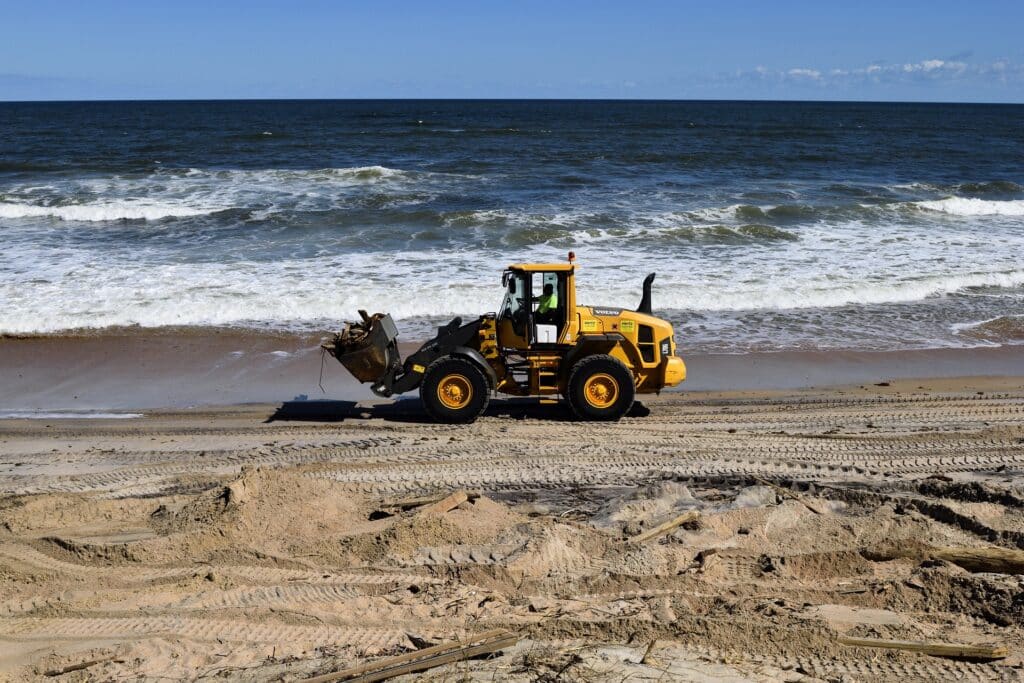
And like a Barbie Builder doll (yes, there is a construction worker Barbie), many of them wore pink. I had no idea that there were companies like Safety Girl and Xena Workwear that produced pink hard hats or stylish safety boots – but I would come to know them well as I continued to navigate this newfound network of women in the years to come.
It reminded me of what Marie Kondo said about bringing items that spark joy to a potentially stressful situation. Pink hats and tools labeled with colorful duct tape made me smile, made others smile, and allowed me to gain confidence and stake a claim in a traditionally male-dominated space.
Beauty Despite the Devastation
After long days of clearing debris and averting the spread of mold, my husband and I sought a brief respite from the devastation. On our way to the beach to watch the sunset, we stumbled upon Oaks by the Bay Park. Many of the trees in this small greenspace had lost limbs, and debris littered the ground. Yet, right in the center of the park stood The Old Sentry – a massive, sprawling live oak thought to be at least 250 years old.
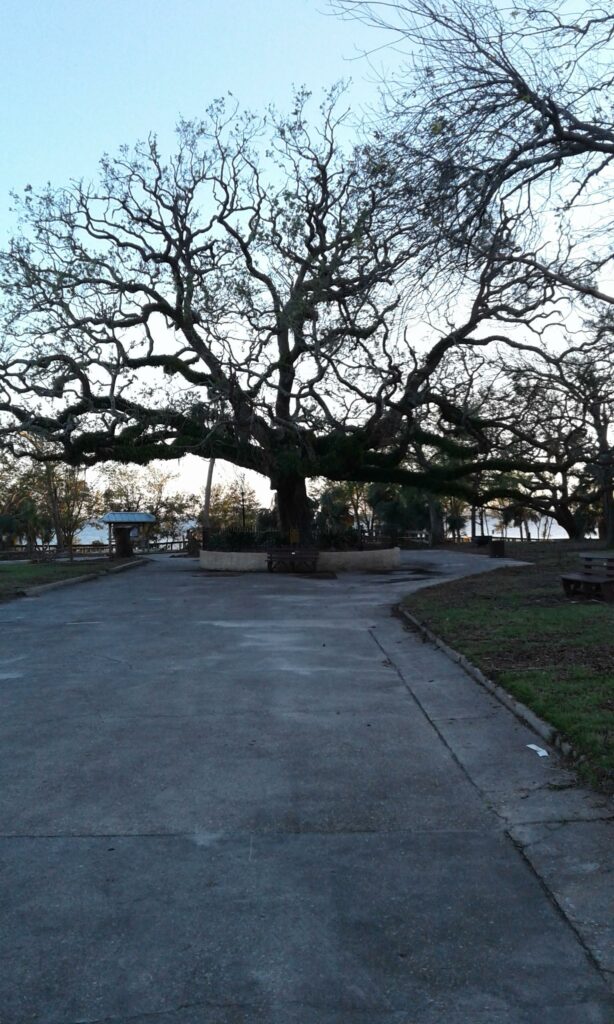
Unlike the other trees, this ancient giant had no visible damage. A nearby historical marker pointed out that the tree had been standing during the Civil War. War, hurricanes – this tree was a survivor, just like the remarkable people I had met, both those I’d worked with and those rebuilding their windswept lives. I wanted to be as resilient.
We walked down to the beach and watched the sunset over the water – the calm serenity was a glorious contrast to the power the wind and waves had so recently displayed.
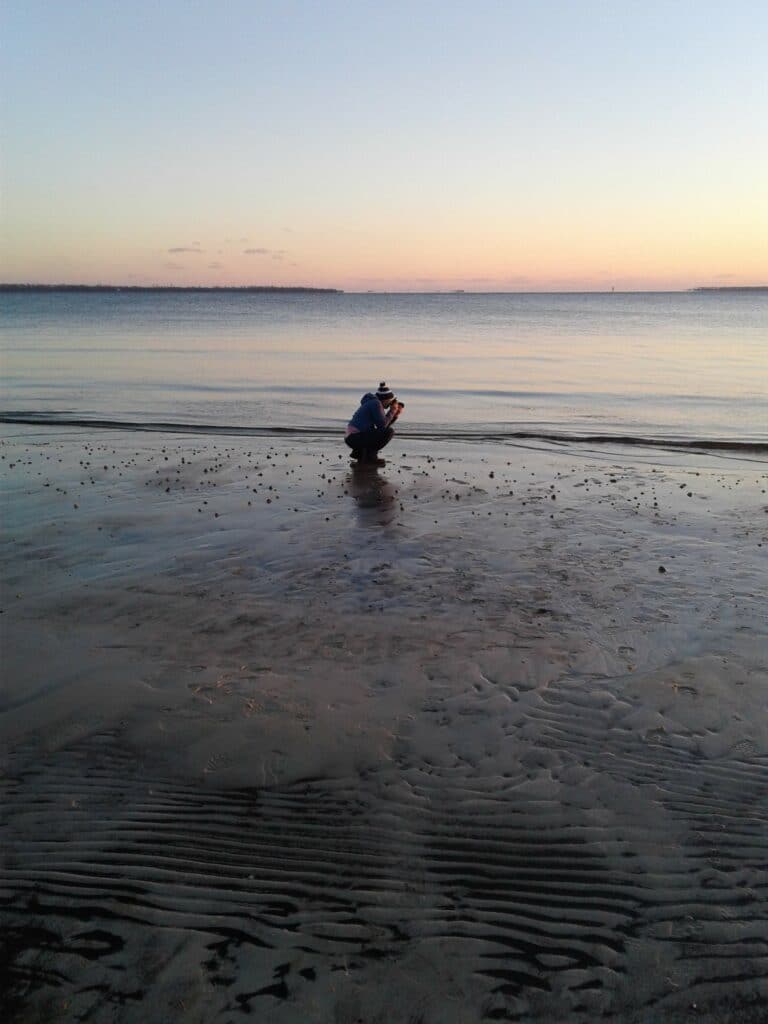
Volunteering and Voluntourism – Helpful or Harmful?
Our trip could be labeled volunteering since the primary purpose of the trip was to serve. “Voluntourism” – tourist travel with a volunteering component – has become increasingly popular in recent years as a way to make travel more meaningful and give back to the places visited.
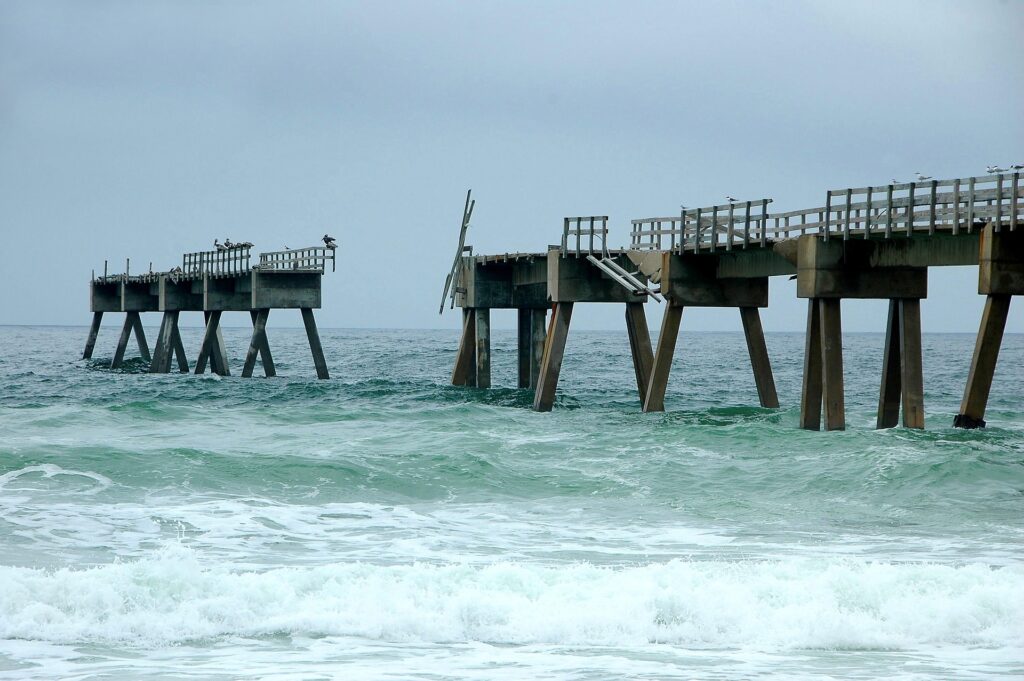
But voluntourism has garnered a bad reputation as an exploitive, manipulative, money-making industry that squanders resources and takes advantage of local circumstances, often doing more harm than good. To ensure that your good intentions produce positive results, consider the following:
- Work with organizations you already trust. Choose a charity that is active in your local community in addition to far-off places. When you volunteer close to home, you can observe how the organization operates, how funds are used, etc.
- Look for endorsements from trusted sources. Travel guides such as AFAR and Travel + Leisure offer vetted lists of voluntourism activities.
- Focus on safety. Consider how the organization handles matters of safety – both yours and the locals’. For construction tasks, do they require the minimum of personal protection equipment (PPE), namely safety-toe boots, safety glasses, a hard hat, gloves, and earplugs? Do they make sure volunteers have skills or train participants on how to safely perform new tasks? Is the resulting work structurally sound and up to code?
- Volunteer domestically. Complaints about exploitive voluntourism often involve travel to other, less economically stable countries.
- Make sure it does not take work from local residents. For example, National Geographic describes a well-meaning volunteer who regularly gave away bicycles – which took revenue away from a local bike shop.
In Conclusion
Ken Budd, author of The Voluntourist, sums it up nicely: “The word ‘volunteer’ is part of the reason for voluntourism’s battered reputation. It implies that someone is doing you a favor by showing up. And yet I always saw myself more as an intern: Someone who did whatever grunt work was needed—cleaning windows, collecting data, hauling trash—and was exposed to exceptional people.”
When you choose volunteer experiences wisely, expending your time and energy on behalf of others can result in real good. In my experience, the lasting connections and satisfying travel memories are well worth the sweat, discomfort, and personal expenses involved.
Book Your Travel to ANY Destination
Search, compare and book hotels & rentals at the best prices that are sourced from a variety of platforms including Booking.com, Hotels.com, Expedia, Vrbo, and more. Search for ANY destination by clicking in the upper left corner of this map. You can also use the filter to fine-tune your search, and find restaurants, attractions, and more!


Cara Siera is a freelance writer, editor, and photographer from Tennessee, USA with a background in psychology and sociology. Her work has appeared in Creative Nonfiction’s online journal Brevity, the Red Mud Review, Fearsome Critters: A Millennial Arts Journal, and countless websites. Cara also curates the work-from-anywhere lifestyle and travel blog Anatomy of Adventure. She is a foodie with a passion for international travel, recipe creation, understanding other cultures, and the great outdoors. Learn more about her work here.